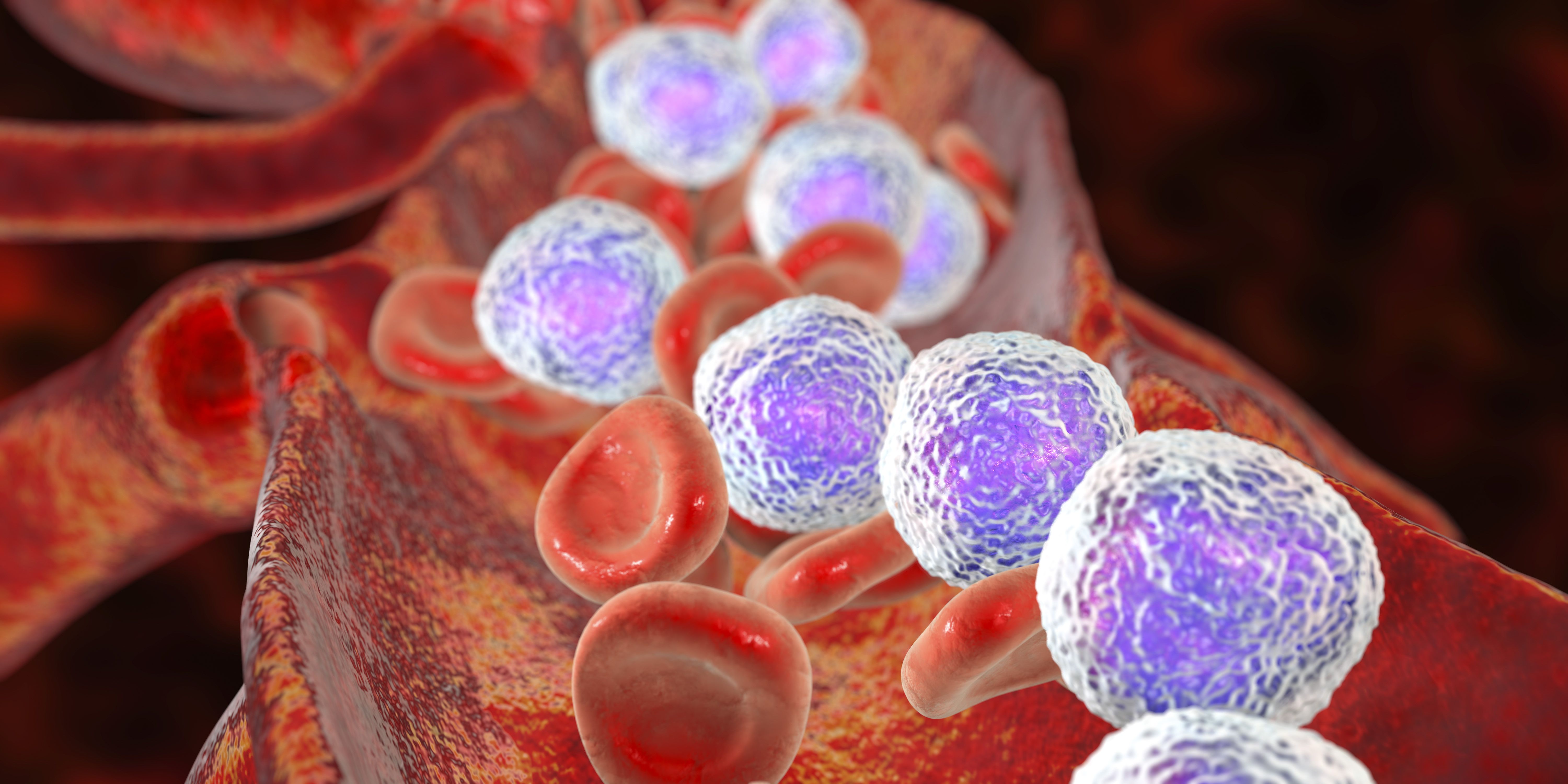Liso-Cel Yields Long-Lasting Complete Responses in Heavily Pretreated MCL
Treatment with liso-cel appears to result in clinically meaningful activity across several subgroups of patients with mantle cell lymphoma, including those with high-risk features.
Patients who were included in the study underwent lymphodepletion with 30 mg/m2 of fludarabine plus 300 mg/m2 of cyclophosphamide followed by liso-cel at 1 of 2 dose levels: 50 x 106 or 100 x 106 CAR T cells.

Patients with heavily pretreated, relapsed/refractory mantle cell lymphoma (MCL) experienced long-lasting complete responses (CRs) and manageable toxicities following treatment with lisocabtagene maraleucel (liso-cel; Breyanzi), according to primary analysis results from the MCL cohort of the phase 1 TRANSCEND NHL 001 study (NCT02631044).
Patients treated with liso-cel in the primary analysis set (PAS) cohort (n = 74) achieved an overall response rate (ORR) of 86.5% (95% CI, 76.5%-93.3%), including a partial response rate of 12.2% and CR rate of 74.3% (95% CI, 62.8%-83.8%) when assessed for best response via independent review committee (IRC). Additionally, 6.8% of treated patients had stable disease, and 6.8% were not evaluable. In the efficacy analysis set (n = 83), the ORR by IRC was 83.1% (95% CI, 73.3%-90.5%), including a CR rate of 72.3% (95% CI, 61.4%-81.6%).
At a median follow-up of 22.8 months (95% CI, 16.7-23.0), responders had a median duration of response (DOR) of 15.7 months (95% CI, 6.2-24.0). Additionally, investigators reported a median DOR of 16.8 months (95% CI, 7.5-24.0) for complete responders and 2.2 months (95% CI, 1.5-2.4) for partial responders. In total, 52.9% (95% CI, 40.1%-64.2%) and 42.7% (95% CI, 29.9%-54.9%) of responders (n = 69) maintained a response at 12 months and 18 months, respectively. Additionally, among complete responders (n = 60), a response was maintained at 12 months and 18 months, respectively, in 57.8% (95% CI, 44.2%-69.2%) and 46.7% (95% CI, 32.8%-59.4%).
ORR was confirmed to be consistent in prespecified patient subgroups in the efficacy analysis set, which included those with high-risk features. Investigators reported that 6 complete responders were censored due to dying from COVID-19 infection; in light of this, the median DOR was 17.5 months (95% CI, 7.6-24.0), median progression-free survival (PFS) was 17.8 months (95% CI, 7.6-24.9), and median overall survival (OS) was 24.8 months (95% CI, 15.7-not reached [NR]).
Patients who were included in the study underwent lymphodepletion with 30 mg/m2 of fludarabine plus 300 mg/m2 of cyclophosphamide followed by liso-cel at 1 of 2 dose levels: 50 x 106 or 100 x 106 CAR T cells.
To be included in the study, patients were required to be 18 years of age or older with PET-positive MCL and confirmed tissue diagnosis. Patients also needed to have received 2 or more lines of treatment, including a BTK inhibitor, alkylator, and CD20-targeted agent. Although secondary central nervous system (CNS) lymphoma or prior autologous or allogeneic hematopoietic stem cell transplantation were allowed, patients needed to have adequate bone marrow, organ, and cardiac function.
The study’s primary end points were safety and ORR by IRC, with key secondary end points being CR rate, DOR, PFS, OS, cellular kinetics, hospital resource utilization, and health-related quality of life.
Within the liso-cel–treated cohort (n = 88), 30 patients completed the study; 48 discontinued treatment due to disease progression in 28, adverse effects (AEs) in 9, and withdrawn consent in 4. Additionally, 10 were receiving ongoing treatment.
The median patient age in the liso-cel–treated set was 68.5 years (range, 36-86), with 73% of patients being 65 years and older and 20% being 75 years and older. Patients received a median of 3 (range, 1-11) prior lines of therapy, with 30% of patients receiving 5 or more prior lines of therapy. Ninety-four percent of patients received a prior BTK inhibitor, with 74% receiving ibrutinib (Imbruvica). Additionally, 69% of patients had refractory disease, and 53% were refractory to a BTK inhibitor.
The majority of patients who underwent treatment with liso-cel had high-risk disease features, with 75% having a Ki67 proliferation fraction of 30% or more, 23% having TP53 mutations, 31% having blastoid morphology, and 8% having secondary CNS lymphoma.
In terms of additional findings, investigators reported a median PFS of 15.3 months (95% CI, 6.6-24.9) among the overall population, 17.8 months (95% CI, 8.3-24.9) for complete responders, 3.2 months (95% CI, 2.5-NR) for partial responders, and 1.6 months (95% CI, 0.4-24.0) for non-responders at a median follow-up of 23.5 months (95% CI, 17.7-23.8).
The median OS in the overall population, complete responders, partial responders, and non-responders, respectively, was 18.2 months (95% CI, 12.9-36.3), 36.3 months (95% CI, 15.7-NR), 17.1 months (95% CI, 2.6-NR), and 3.1 months (95% CI, 0.9-10.6). The 12-month and 18-month OS rates in the overall population were 61.8% (95% CI, 50.2%-71.4%) and 50.8% (95% CI, 39.2%-61.2%), as well as 72.9% (95% CI, 59.6%-82.5%) and 59.8% (95% CI, 45.9%-71.3%), respectively, among complete responders.
Cytokine release syndrome (CRS) occurred in 61%, 60% of which was low-grade with 1 instance of grade 4 CRS. The median time to onset of CRS was 4.0 days (range, 1-10), and the median time to resolution was 4.0 days (range, 1-14). Other common any-grade treatment-emergent AEs (TEAEs) included neutropenia (59%), anemia (44%), fatigue (35%), and thrombocytopenia (30%). Additionally, common grade 3 or higher TEAEs included neutropenia (56.0%), anemia (37.5%), and thrombocytopenia (25.0%).
These data were presented at the 2023 Society of Hematologic Oncology (SOHO) Annual Meeting.
Reference
Palomba ML, Siddiqi T, Gordon LI, et al. Lisocabtagene maraleucel in R/R MCL: primary analysis results from the MCL cohort of the single-arm, multicenter, phase 1 seamless design TRANSCEND NHL 001 study. Poster presented at 2023 Society of Hematologic Oncology (SOHO) Annual Meeting; September 6-9, 2023; Houston, TX. Poster MCL-096.
Newsletter
Stay up to date on recent advances in the multidisciplinary approach to cancer.
Highlighting Insights From the Marginal Zone Lymphoma Workshop
Clinicians outline the significance of the MZL Workshop, where a gathering of international experts in the field discussed updates in the disease state.